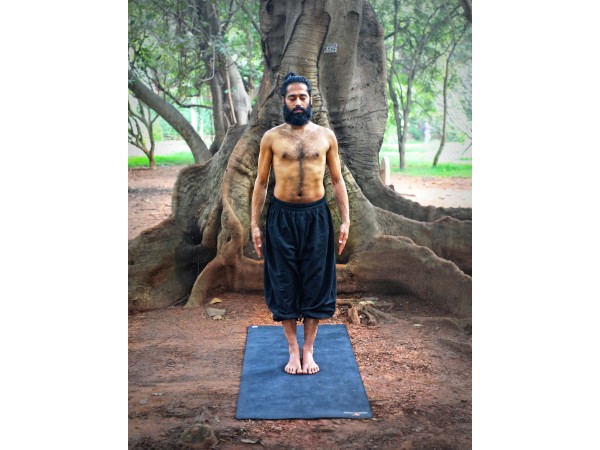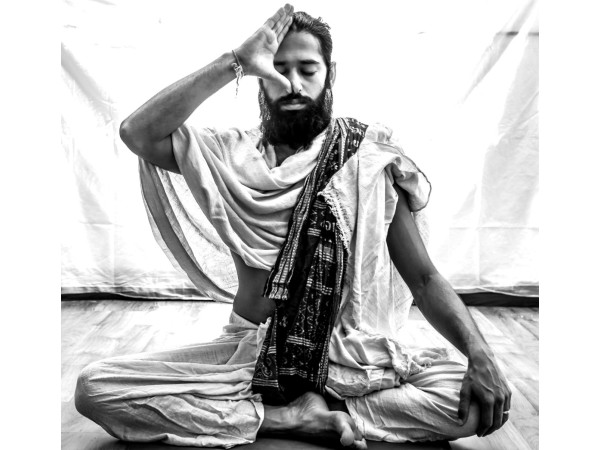Just In
- 15 min ago

- 5 hrs ago

- 7 hrs ago

- 8 hrs ago

Don't Miss
- Finance
 Reliance Q4 Results: Beats Estimates, PAT At Rs 21,243 Crore; Revenue Up 11%
Reliance Q4 Results: Beats Estimates, PAT At Rs 21,243 Crore; Revenue Up 11% - Movies
 HanuMan: Teja Sajja-Prasanth Varma's Fantasy Superhero Film Completes 100 Days In 25 Centers; Details HERE
HanuMan: Teja Sajja-Prasanth Varma's Fantasy Superhero Film Completes 100 Days In 25 Centers; Details HERE - Sports
 CSK vs LSG, IPL 2024: MS Dhoni Record vs LSG - How the Chennai Super Kings Stalwart has Fared against Lucknow Super Giants?
CSK vs LSG, IPL 2024: MS Dhoni Record vs LSG - How the Chennai Super Kings Stalwart has Fared against Lucknow Super Giants? - Automobiles
 Top Tips – How To Charge Electric Scooters For Best Battery Life
Top Tips – How To Charge Electric Scooters For Best Battery Life - News
 Spices Board Probes MDH And Everest Product Bans For Quality Concerns, Here's Why
Spices Board Probes MDH And Everest Product Bans For Quality Concerns, Here's Why - Technology
 Realme C65 5G India Launch Confirmed; Coming Under Rs 10,000
Realme C65 5G India Launch Confirmed; Coming Under Rs 10,000 - Education
 Prioritizing Environment Is Tantamount To Safeguarding Your Own Health
Prioritizing Environment Is Tantamount To Safeguarding Your Own Health - Travel
 Journey From Delhi To Ooty: Top Transport Options And Attractions
Journey From Delhi To Ooty: Top Transport Options And Attractions
Managing Physical And Mental Well-being At Work
We have all heard the popular saying that work is worship. This equates work to a status that is almost holy, and worthy of your worship. Be true to your work by giving it your very best. When you understand the importance of this, you become ready to align yourself with other energies. Create a pleasant atmosphere for yourself at your workplace.

This is largely determined by the rapport that you share with your employers and colleagues. Keep communication lines open for discussion, and resolution of issues at work.
When you take care of your body, your mind also automatically falls in line. Be sure to give yourself a few minutes at least once in an hour to stretch, breathe and refocus. Follow these simple recommendations to enjoy your time at work, and boost your productivity.
Physical Well-being At Workplace
Start with Sukshma Vyayam or subtle exercises. These consist of a gentle rotation of neck, arms, wrists, hips, ankles to slowly warm up the joints. Walk around briskly, and stretch and mobilize your muscles. This will prepare your body for practice, and keep you safe from practice-related injuries.
Samasthithi

Formation of the posture
- Stand with your feet together
- Stretch your arms out beside your body and allow them to hover without making contact
- Gently close eyes
- Relax the body
Benefits
- It prepares your body and calms your mind
- It improves overall body posture
- Creates self-awareness
Word of advice: Try to balance your bodyweight equally on both feet without leaning onto one.
Mental Well-being At Workplace
Khand Pranayama

Formation
- Sit down in Dandasana, keep your back straight and breathe for some time.
- Fold your legs in Sukhasana and prepare your mind for the practice.
- Sit in any comfortable pose (such as Sukhasan, Vajrasana, Ardhapadmasan, Padmasana or Siddhasana) Ideal posture is Poorna Padmasana
- Straighten your back and close your eyes
- Place your palms on your knees facing up (in Prapthi Mudra)
- As you inhale, divide your breath into two equal parts
- Without retaining the breath in your lungs, exhale twice
Duration: You may begin by practising this breathing technique for 1-2 minutes a day and gradually increase it with time.
Benefits
This powerful pranayama affects the functioning of different systems of the body and affords countless benefits. This pranayama will help you develop physically, mentally and emotionally.
- Increases lung's capacity to take in Oxygen
- Builds stamina
- Promotes excess fat loss
- Improves skin health
- Exclusively beneficial to sportsmen such as Athletes, Basketball players, etc.
- Increases lifespan
- Reverses age by retaining youth
- Useful for mountain climbers, athletes, and runners
- Improves stamina
- Athletes can use this breathing technique to enhance their perseverance levels for an entire range of games and sporting activities.
- This pranayama functions as a wonder drug for individuals with shortness of breath.
- One can effect positive change and tranquillity by practising this pranayama in just three or four days.
Anulom Vilom - Alternate Nostril Breathing

Method
- Sit in a comfortable position of Sukhasana, Ardha Padmasana, Vajrasana or Poorna Padmasana.
- Keep your back straight, shoulders relaxed and close your eyes to focus on your breath.
- Place your palms on your knees facing upward (in Prapthi Mudra)
Technique
Gently close your right nostril with your thumb, inhale into your left nostril and close it, letting the breath out through the right nostril. Then inhale through your right, closing it to exhale only through your left. This makes one cycle.
Swaas Dhyan

Formation
- Sit in a comfortable posture (such as Sukhasana, Ardha Padmasana or Padmasana)
- Place your palms on your knees facing up (Prapthi Mudra)
- Straighten your back and close your eyes
- The time you take to inhale and exhale should be in a ratio of 6:6, i.e., if you inhale in six counts, you need to exhale in six counts
- Focus on your breath entering and then leaving your nostrils as you inhale and exhale.
Be an observer of your flow of thoughts by not resisting them initially and letting them flow. Gradually, keep shifting your awareness to your breathing until you reach a point where your complete focus is on your inhalation and exhalation with your mind almost completely devoid of thoughts.
Disha/direction: Face towards East
Benefits
- Brings your mind to the present and makes you more aware
- Reduces stress
- You will experience calmness
- Clears your mind of unwanted thoughts
Ropan Dhyan

The word Ropan has its origins in Sanskrit literature. It is derived from the word "Ropanaha" which essentially means "To Heal".
Method
Posture
Choose a comfortable posture to carry out this meditation practice. This can be Sukhasana, Vajrasana, Ardha Padmasana, Padmasana or even standing in Samasthithi position. The eyeballs are brought towards the eye centre causing slight pressure on the Medial Canthus. Keep the tongue rolled back and placed on the soft palate. While white clothing is advised to be worn during Ropan mediation, it is not compulsory.
Technique
Choose a good environment for best results. The technique of this mediation involves forming an imaginary spot, like a black circle about 10 inches from your heart centre on the outside and similarly forming a black dot within, on the inside. Inhale your breath from the point outside your heart for a count of 6 seconds, retain your breath for 6 seconds and then direct the flow towards the black dot inside. From the same point within, draw out the air to exhale and direct it out to the point placed outside for a count of 6 seconds. Retain your breath for 3 seconds before you inhale again to repeat the entire process. The position of these two black imaginary circles inside and outside the body and the nose as the third point should take the shape of a triangle. Though the eyes are closed, the mind's eye is focussed on the meditative breath points.
To achieve the best results of this meditation, it is suggested that you practice this 21 times early in the morning for a continuous duration of 21 days. The breath ratio to be followed is 6:6:6:3 i.e. inhalation of 6 seconds, retention of 6 seconds followed by an exhalation of 6 seconds and retention for 3 seconds. One round involves Inhalation (Purak), Retention (Kumbakh), Exhalation (Rechak) and Retention (Kumbakh). This done for 21 rounds forms the suggested practice cycle for one day.
Benefits
- With regular committed practice, the practitioner will also be able to acquire the power of hypnotism (Sammohan)
- Builds self-esteem
- Reduces anxiety, stress and fatigue by releasing the toxins that cause these negative emotions
- Causes increased sense of serenity reducing anger
- Opens the mind- Enables changed outlook and fresh perspective
- Gives the practitioner the power of healing
- Cures insomnia
- Removes lethargy and laziness
Start with 3-5 minutes of practice to increase the duration as per your comfort. Make sure you are seated in a comfortable position before as you start your practice as physical discomfort will prove to be distracting.
On A Final Note...
Inculcate the practice of yoga for a minimum of 15-20 minutes for at least 3 times a week. When you start your day by focussing on your physical health, this, in turn, boosts your productivity and creativity. Pranayama techniques and meditation improve your level of concentration, positively affect your decision-making, and goal-setting processes. Yoga brings discipline, and order into your life. These are valuable life skills that can aid you in your personal as well as professional life to make you a better worker, colleague, boss, and mentor.

-
 healthBust Bloating: 5 Exercises Every Teenage Girl Needs For A Happy Tummy
healthBust Bloating: 5 Exercises Every Teenage Girl Needs For A Happy Tummy -
 healthDelhi Air Quality: Breathing Exercises To Combat The Effects Of Air Pollution
healthDelhi Air Quality: Breathing Exercises To Combat The Effects Of Air Pollution -
 pregnancy parentingMental Health: Teaching Meditation To Kids; Benefits And Simple Techniques
pregnancy parentingMental Health: Teaching Meditation To Kids; Benefits And Simple Techniques -
 healthYoga For Abs: 5 Celeb-Inspired Poses For Sculpted Abs
healthYoga For Abs: 5 Celeb-Inspired Poses For Sculpted Abs -
 pregnancy parentingExpert Talks About The Benefits Of Prenatal Yoga For Expecting Mothers
pregnancy parentingExpert Talks About The Benefits Of Prenatal Yoga For Expecting Mothers -
 healthDoctors’ Day: The Early Indian Medicine Inventions; Its Not Just Ayurveda!
healthDoctors’ Day: The Early Indian Medicine Inventions; Its Not Just Ayurveda! -
 healthHave You Heard Of Hot Yoga? Can It Aid Weight Loss?
healthHave You Heard Of Hot Yoga? Can It Aid Weight Loss? -
 healthWhat Is The First Yoga Pose You Should Learn?
healthWhat Is The First Yoga Pose You Should Learn? -
 fashionInternational Yoga Day 2023: What To Wear For Yoga, An Easy Guide To Select Ideal Outfit
fashionInternational Yoga Day 2023: What To Wear For Yoga, An Easy Guide To Select Ideal Outfit -
 insyncInternational Yoga Day 2023: Yoga Gifts For Every Zodiac Sign
insyncInternational Yoga Day 2023: Yoga Gifts For Every Zodiac Sign -
 healthInternational Day of Yoga: What Is Laughing Yoga? How To Do It?
healthInternational Day of Yoga: What Is Laughing Yoga? How To Do It?


 Click it and Unblock the Notifications
Click it and Unblock the Notifications



